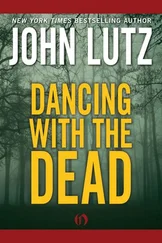John Wohlstetter - Sleepwalking with the Bomb
Здесь есть возможность читать онлайн «John Wohlstetter - Sleepwalking with the Bomb» весь текст электронной книги совершенно бесплатно (целиком полную версию без сокращений). В некоторых случаях можно слушать аудио, скачать через торрент в формате fb2 и присутствует краткое содержание. Город: Seattle, Год выпуска: 2012, ISBN: 2012, Издательство: Discovery Institute Press, Жанр: История, military, Политика, Публицистика, на английском языке. Описание произведения, (предисловие) а так же отзывы посетителей доступны на портале библиотеки ЛибКат.
- Название:Sleepwalking with the Bomb
- Автор:
- Издательство:Discovery Institute Press
- Жанр:
- Год:2012
- Город:Seattle
- ISBN:978-1-93659-906-6
- Рейтинг книги:3 / 5. Голосов: 1
-
Избранное:Добавить в избранное
- Отзывы:
-
Ваша оценка:
- 60
- 1
- 2
- 3
- 4
- 5
Sleepwalking with the Bomb: краткое содержание, описание и аннотация
Предлагаем к чтению аннотацию, описание, краткое содержание или предисловие (зависит от того, что написал сам автор книги «Sleepwalking with the Bomb»). Если вы не нашли необходимую информацию о книге — напишите в комментариях, мы постараемся отыскать её.
RICHARD PERLE, Resident Fellow, American Enterprise Institute and Assistant Secretary of Defense, 1981–1987 Sleepwalking with the Bomb
Sleepwalking with the Bomb — читать онлайн бесплатно полную книгу (весь текст) целиком
Ниже представлен текст книги, разбитый по страницам. Система сохранения места последней прочитанной страницы, позволяет с удобством читать онлайн бесплатно книгу «Sleepwalking with the Bomb», без необходимости каждый раз заново искать на чём Вы остановились. Поставьте закладку, и сможете в любой момент перейти на страницу, на которой закончили чтение.
Интервал:
Закладка:
Between the two world wars, the idea that fewer arms are always safer was common currency, among leaders as well as with the general public. Thus Secretary of State Charles Evans Hughes (whom President Wilson had defeated in 1916 with the slogan “He kept us out of war”) said of arms limitation: “How was it possible to stop this mad race? By an international agreement for the limitation of armaments.”
Staunch conservative president Herbert Hoover went even further. He endorsed the 1928 Kellogg-Briand Pact between the U.S. and France, which expressly outlawed war as an instrument of national policy and sought reductions—not just limitations—in arms.
In June 1933, as Hitler took power, two future prime ministers squared off in Parliament. Winston Churchill presciently called for Britain and France to rearm, and Anthony Eden opposed rearmament in order “to secure for Europe that period of appeasement which is needed.” The British Peace Pledge Union formed and collected 10 million “Peace Ballots” (from a British population of 46 million), with 87 percent of those casting ballots voting to totally disarm and have the League of Nations keep world peace. Yet another future prime minister, Clement Atlee, told the House of Commons on December 21, 1933: “We are unalterably opposed to anything in the nature of rearmament.”
But the leaders of the world’s democracies were to discover that treaties with German nationalists and Nazis, and with Japanese militarists as well, could and would be broken. Put simply, they learned that with arms accords it matters greatly whether your partners are friends, neutrals, or adversaries.
In 1934 the Japanese began breaking out of the ship size limits of the 1922 Washington Naval Treaty, which had limited, with a few grandfathered exceptions, single-ship tonnage to 35,000 and gun bore widths to 16 inches. Japan built the two largest battleships ever to ride the high seas: the 70,000-ton leviathans Yamato and Musashi . They carried nine 18.1-inch guns, the largest ever mounted on a ship; the guns’ recoil was so powerful that all nine could not be fired at once, lest the ship roll over. They could hurl a 3,200-pound projectile—a half-ton heavier than an American 16-inch shell—26 miles with unmatched accuracy.
Disarmament efforts fared no better with Nazi Germany. The June 18, 1935, Anglo-German Naval Treaty limited the German Navy to 35 percent of the British Royal Navy’s tonnage. But on July 1, 1936, the keel of the super battleship Bismarck , a 45,000-ton behemoth to be fitted with eight 15-inch guns, was laid. By September 1938—as British prime minister Neville Chamberlain returned from Munich proclaiming to his countrymen that he had achieved “peace in our time”—the Bismarck was complete to the upper deck level, and it was launched a few months later. The keel of her sister ship, Tirpitz , was laid in November 1936, and the 47,000-ton ship was launched in April 1939. Hitler denounced the treaty on April 28, 1939, having already swallowed up the Rhineland, Austria, and Czechoslovakia. In the event, neither the German nor Japanese super ships played a decisive role in maritime combat during the war. [6] The Nazi ships posed a fearsome maritime threat, but they were defeated by British air power: Bismarck , named for Germany’s unifier and “Iron Chancellor” Otto von Bismarck, sank Britain’s battle cruiser HMS Hood , on May 24, 1941. After an epic chase the British sank it three days later. Tirpitz , named after the World War I admiral who built up Germany’s navy, shelled the island of Spitsbergen in January 1943; she was sunk in her pen November 12, 1944, by British bombers. As for the Japanese titans, both saw action in the landmark Battle of Leyte Gulf, from October 23 to October 26, 1944; the Japanese threw all their naval assets into the battle in a desperate attempt to prevent General MacArthur from fulfilling his wartime pledge to return to the Philippines. Musashi was sunk by American planes and submarines in the opening engagement. Yamato retreated ignominiously after surviving a torpedo charge by American destroyers on Leyte’s final day, before she could shell troops landing on the beach; the reason for her retreat remains unclear to the present day. She was sunk by American carrier planes in April 1945 off Okinawa, where she had been sent as a last-ditch decoy.
World War II rendered ship size limits moot. Yet the prewar arms-control concepts endured—limits upon platform size (ships then, submarines and bombers today), explosive payload (shells then, bombs and warheads now), and finally sites (bases then, silos now). They would return to bedevil arms-control efforts after the war, because the complexity of modern strategic systems made setting appropriate benchmarks nearly impossible.
How Much Is Enough?: Early Cold War Arms Talks
THE NEAR-NUCLEAR miss of the Cuban Missile Crisis spurred renewed efforts to secure superpower disarmament. During arms negotiations between the U.S. and the USSR, much was made about the folly of adding yet more weapons to already gigantic stockpiles. Was their sole utility to “make the rubble bounce” after Armageddon? These talks were based upon what Western arms controllers presumed was a common interest with the USSR in reducing massive stockpiles of nuclear weapons and potential vulnerability to surprise attack.
The “rubble” metaphor was superficially appealing but misleading. A “bolt from the blue” attack could be totally successful (and thus inviting) if a country did not have enough armaments remaining to retaliate afterwards. (Recall the previous chapter’s discussion of why the ability to absorb a surprise first strike, with enough force left to retaliate, is so important.) The attacked country’s entire force, then, must incorporate a multiple of the requisite destructive retaliatory power needed. If, as some strategic planners feared early on, the Soviets in a best-case attack possibly could destroy 90 percent of America’s land-based ICBMs, half of America’s submarines sitting in port, and 90 percent of the bombers, the small portion that survived would have to cover all targets. [7] Factors include how much of the attacking force reaches the target, how well sheltered targets are, whether there is sufficient warning, whether bombs burst in the air or on the ground, how hard and which way the winds blow, how well protected targets are. Calculations of the destructive effects of large-scale nuclear attacks are dizzyingly complex and, under the best of circumstances, highly subjective, with huge margins of error. Serious strategists understood these limitations and used calculations to help frame problems in broad brush strokes so as to better address them.
Pessimistic estimates presented to President Eisenhower were based in part on reconnaissance flights showing Soviet missiles being deployed; the United States estimated that the Soviets would deploy 100 ICBMs by 1960. At the time, both sides based missiles above ground, leaving them highly vulnerable.
The “nuclear strategic triad” doctrine held that each leg of the triad—land, sea, and air—must itself be able to accomplish full postattack retaliation, to guard against Russian breakthroughs that neutralized the other two legs. Such secure, survivable forces would remove any temptation the Soviets might feel to launch such an attack, thus strengthening deterrence. In other words, no one intended to “make the rubble bounce.”
In November 1969, the new Nixon administration met with the Soviets in Helsinki for the first Strategic Arms Limitation Talks, known by the acronym “SALT.” The talks were from the outset muddled by fundamental cultural differences in the way American and Russian negotiators approached their complex task. Henry Kissinger, who superintended the Nixon and Ford administration arms talks, explained the problem in his memoirs.
Читать дальшеИнтервал:
Закладка:
Похожие книги на «Sleepwalking with the Bomb»
Представляем Вашему вниманию похожие книги на «Sleepwalking with the Bomb» списком для выбора. Мы отобрали схожую по названию и смыслу литературу в надежде предоставить читателям больше вариантов отыскать новые, интересные, ещё непрочитанные произведения.
Обсуждение, отзывы о книге «Sleepwalking with the Bomb» и просто собственные мнения читателей. Оставьте ваши комментарии, напишите, что Вы думаете о произведении, его смысле или главных героях. Укажите что конкретно понравилось, а что нет, и почему Вы так считаете.












